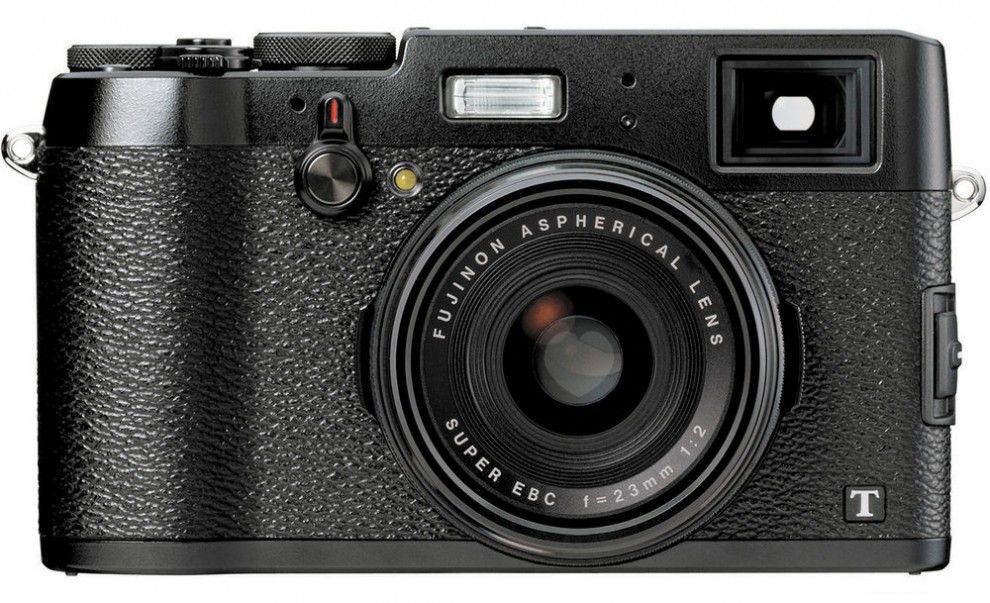Few cameras have inspired photographers as much as Fuji’s venerable X100 line of cameras. Street photographers are attracted to these cameras for their retro good looks and quiet operation but is that all they have to offer? Our Fuji X100T street photography review takes this excellent little camera for a spin to see how it performs on the street. Hit the jump for the full review!
Fuji X100T Street Photography Review
I’ve been using a review sample of the Fuji X100T as my primary camera for just over 2 months and let me start off by saying I really like it. Yup, I have a Leica M 240 sitting in my bag and every day I reach for the X100T on my way out the door. It’s really that good!
No camera is perfect but the little Fuji X100T comes pretty darn close from my perspective. My review is focused on using the camera for street photography so I won’t be going into any charts or graphs. I’m more interested in what it’s like to use this camera as an every day shooter. This being said, let’s get on with the review!
It All Started With The X100
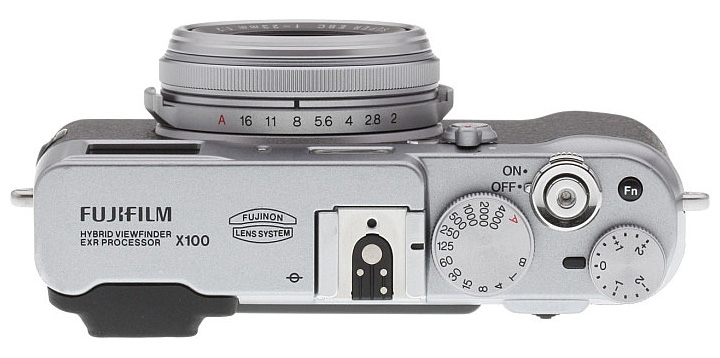
The original Fuji X100 was released at Photokina in 2010 and the little camera immediately captured the imagination of the photography community. It’s retro styling made it instantly desireable (many street photographers called it the poor man’s Leica) but the camera was more than a pretty shell. It came with a 35mm equivalent lens that was perfectly matched to its APS-C CCD sensor for optimal performace. But the real star of the show was the hybrid viewfinder that combined an optical and electronic viewfinder for a shooting experience unlike any other camera on the market.
The X100 sold out almost immediately and it was the better part of a year before Fuji could catch up with the demand for this little camera. But in spite of its popularity there were a few issues and Fuji responded with a series of firmware updates until they got it right. The company proved it cares about the way its customers use their cameras and earned the respect of a lot of photographers along the way.
Fuji followed up with the X100S with vastly improved auto focus performance, a quick menu and Fuji’s newer X-Trans sensor while keeping the same retro styling as the original. Why mess with a good thing? The updated features made the X100S an instant hit with street photographers but some people felt the build quality could be a little better. And that brings us to the X100T which was introduced in late 2014 with even better auto focus performance, excellent build quality and a few new features that really make it shine.
Fuji X100T – The Third Time’s A Charm
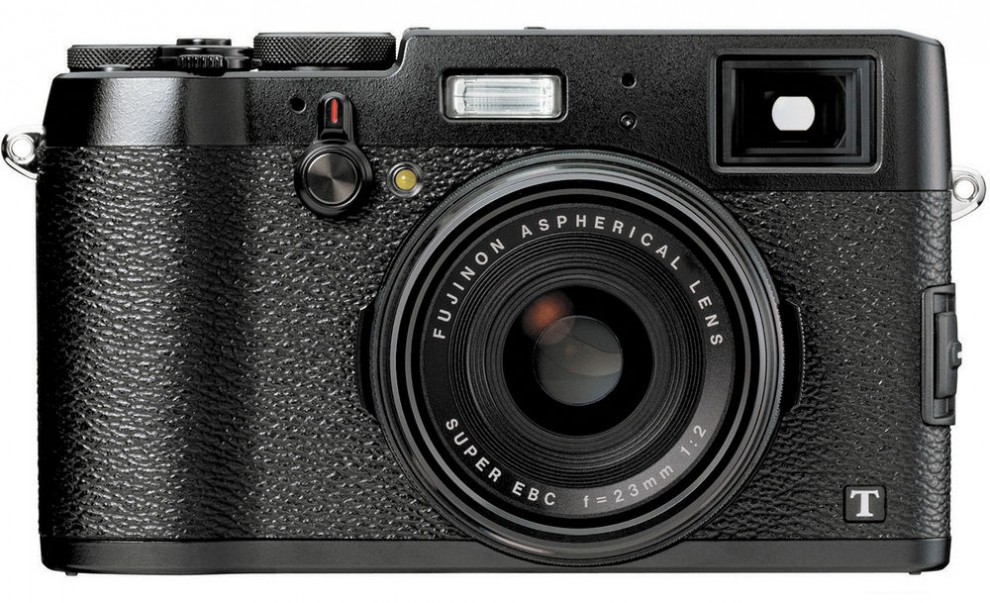
Few would argue that the Fuji X100T got a lot of things right. It’s performance is just a little bit better than the X100S across the board with enough new features and refinements to make it stand out as a truly excellent little shooter.
The Fuji X100T was the first Fuji camera to feature their new standardized control layout with buttons that are clean and logically laid out. The fiddly little command wheel on the X100S is replaced by a sensible d-pad. And the difficult command toggle has been replaced by a very usable command dial that rotates freely. The back of the camera is now very well laid out and appears to be designed with a photographer’s fingers in mind.
But more importantly, everything just “feels” better with the X100T. Dials snap into place firmly and aren’t as easy to accidentally change as the X100S. This is a big thing for a camera that’s going to be around your neck every day.
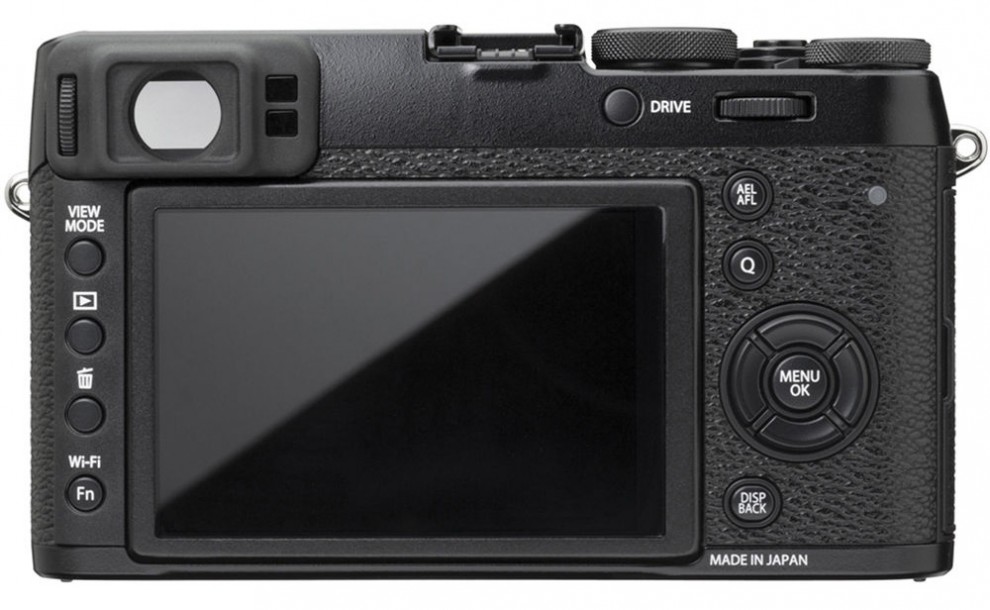
The X100T’s rear LCD is now 3″ and double the resolution of the X100S. This makes framing shots with the rear LCD a bit easier but most street shooters will likely use the incredible hybrid viewfinder to frame their shots. Still it doesn’t hurt to have a nice LCD for the occasional chimping or reviewing your images at a coffee shop along the way.
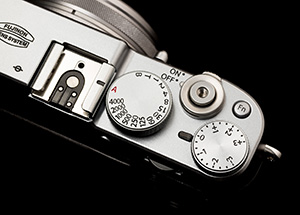
Exposure compensation is now +/- 3 stops up from 2 on the X100S. And again, this dial is robust and clicks firmly into place so there’s less chance of accidentally bumping this while you’re out shooting.
The X100T also added Wifi for remote shutter control and picture transfer. I never really got into the Wifi shutter control but being able to transfer pics to your phone to post to Instagram while on the road is a fun way to share as you shoot.
But the big star of the show is once again the fantastic hybrid viewfinder. It’s the same optical viewfinder (OVF) and EVF as the X100S but Fuji X100T has an all new Electronic Rangefinder mode that works like a charm. It overlays a small electronic image in the bottom right corner of the optical viewfinder to give you real time magnified view of your focus point.
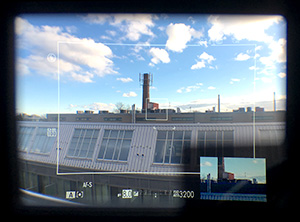
I’m a big fan of using an optical viewfinder for street photography because you can see your subject at the exact moment of exposure (no black out) and you can see outside the image area to anticipate action that’s about to enter the frame. A couple of reasons why rangefinders are so popular with street shooters.
But the X100 series of cameras are autofocus and an optical viewfinder doesn’t provide much feedback once the camera has locked onto its subject. Up until now, you had to rely on Fuji’s Corrected AF Frame which displays a small green box in the OVF that moves left or right in the viewfinder to indicate the focus point. It’s better than nothing but still just an estimate.
The electronic rangefinder mode in the Fuji X100T means you can get all the benefits of shooting with the OVF and see your focus point at the same time. This is a huge step forward for the Hybrid Viewfinder and definitely a good thing!
All the upgrades and new features make the Fuji X100T look great on paper. But how does it handle on the street? Surprisingly well actually… And I’ve been shooting with a Leica M 240 for the past 2 years so my expectations are pretty high. Let’s have a look at some of the things that make the X100T a great little shooter for street photography.
The following images were shot with the Fuji X100T – click for full size versions!
Image Quality And That X-Trans Sensor
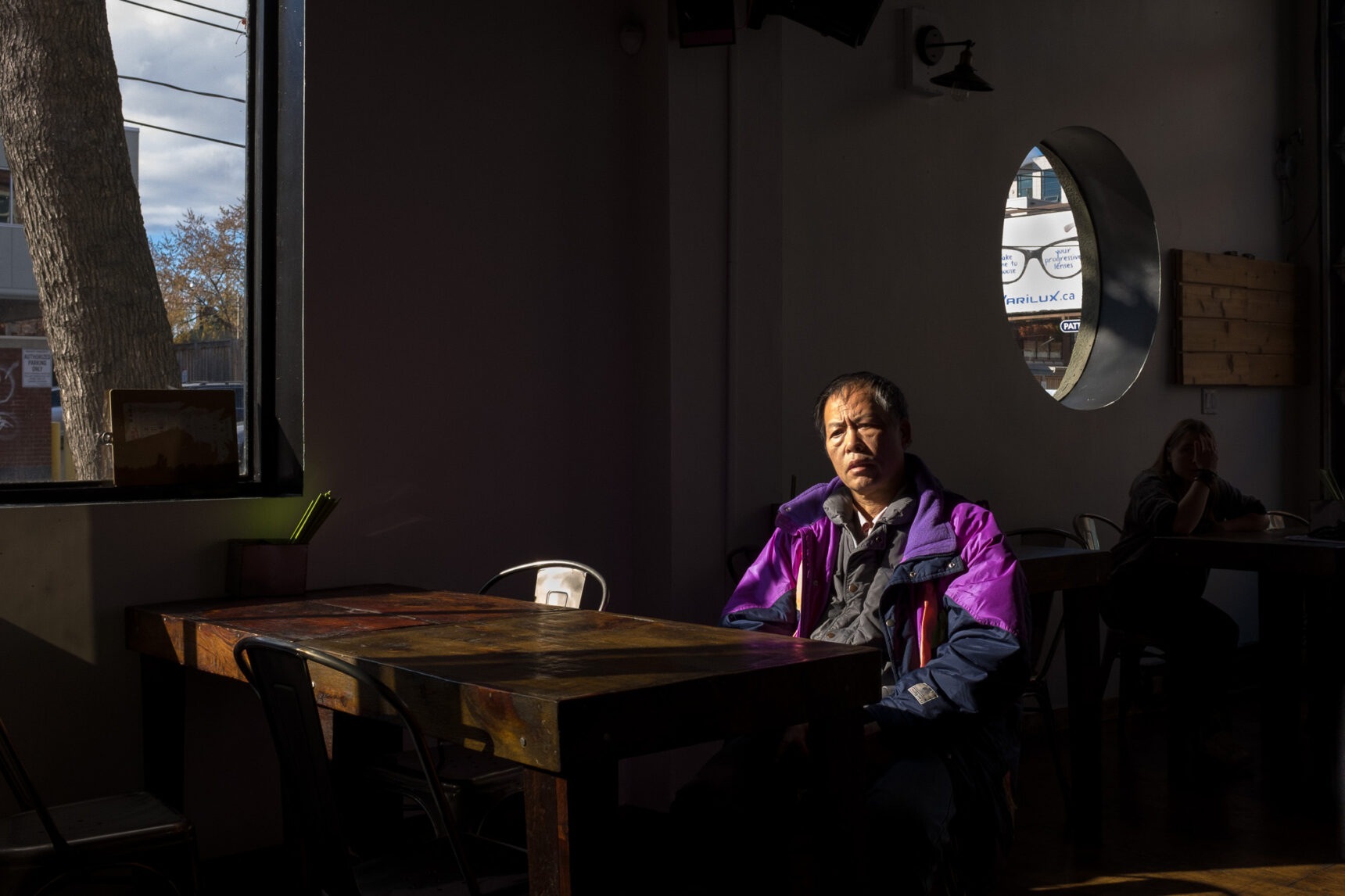
At the end of the day it’s the image quality that matters and when it comes to the Fuji X100T (or any Fuji X Series camera for that matter) it’s the X-Trans sensor that does the heavy lifting. In technical terms, Fuji have modified the way that red, green and blue pixels are laid out on the sensor to minimize color moiré so there’s no need for an optical low pass filter. This means images that can resolve well beyond the megapixel count of the sensor.
For me, the X-Trans sensor creates images with a kind of 3d pop that I rarely see from other digital cameras. And this sensor has incredible latitude in the highlights. The above shot was overexposed by a full stop and then “printed down” in Lightroom to recover the hightlihgts while still maintaining a good amount of shadow detail. Being able to expose for the shadows and print for the highlights just like traditional negative film gives you a certain amount of versatility in post but there are practical limitations before skin tones start looking a little “plastic”.
Raw files from the X100T have a bit more snap right out of camera compared to the Leica M 240 and you can use a lighter touch in Lightroom to get the look you’re after. All in all I was very impressed by the image quality from this little camera.
Keeping It Quiet With The Fuji X100T

Let’s face it, street photographers like being stealthy and we love a quiet shutter! The Fuji X100T uses a leaf shutter that’s about as quiet as I’ve ever encountered. I’m so used to the healthy clunk of the Leica M 240 shutter that I wondered if the X100T actually making an exposure when I hit the shutter. But over time I was able to actually feel the subtle movement of the camera when the shutter fired and I was left with a stealthy little beast that let me shoot just about anywhere without attracting attention to myself.
To be honest, this isn’t critical for street photography. People can see you put the camera to your eye and they can see you with a camera around your neck so having a quiet shutter doesn’t automatically let you “get away” with shooting. But it does give you a subtle sense of confidence to know that your camera is quiet as a mouse. For me this meant that I wasn’t afraid to use the Fuji X100T anywhere or any time. It just stayed around my neck and when interesting things started happening I was ready to shoot.
And that’s what it’s all about.
The X100T Is Ready When You Are
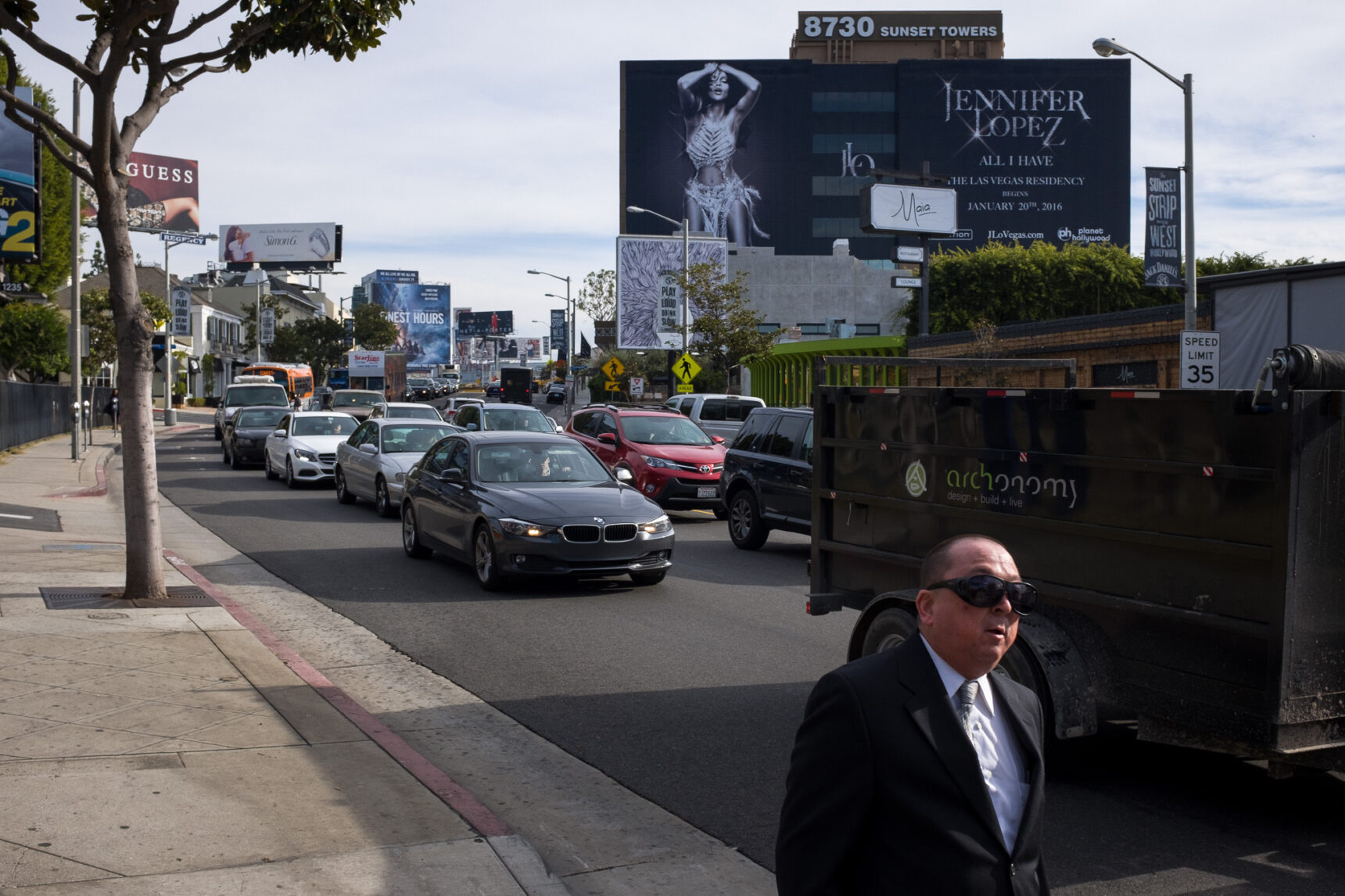
Being quiet ins’t enough. My street photography camera needs to be fast and responsive so it’s ready to shoot when something interesting happens along.
Fuji claims the X100T has a start up time of .5 seconds but I found it was close to two seconds before the camera was actually ready to shoot. Wake from sleep was a little faster but not much. When I’m shooting I typically keep the camera on and awake by half pressing the shutter every once in a while as I’m walking around. This way the camera is ready to go whenever I need it. I burn through a few more batteries this way but it works for me.
You can set the time before sleep but the Fuji X100T maxes out at 3 minutes which really isn’t enough time for my style of shooting. It would be great if Fuji gave us the ability to set that to 5 or even 10 minutes in a future firmware update. As it stands, the camera is perfectly workable as is but if you see something starting to develop give a quick half press to the shutter to make sure you camera is ready when you are!
Zone Focus In An Auto Focus World

I prefer to shoot with manual focus lenses that have distance marks and a depth of field scale printed on the outside of the lens. This lets me zone focus quickly so I’m always ready for the shot and it’s one of main the reasons the Leica worked so well for me.
But the reality is that everything is auto focus now and it’s probably going to stay that way. When I started shooting with the X100T for this review I decided that I’d shoot with auto focus and see if I could adapt. After a couple of months I’m happy to report that the Fuji X100T performed great! In fact, the improved auto focus on the X100T meant I rarely thought about getting focus under normal circumstances. The camera just worked the way I expected.
In fast moving scenes where I wouldn’t have time to focus before every shot I’d lock the auto focus (using the ae/af lock button on back of the camera) on an object around 11 feet away (I shoot at f/8 – hyperfocal distance at f/8 on a 23mm lens is around 11 feet) and shoot like I normally would. At this setting everything from around 6 feet to infinity would be in focus and that’s perfect for my style of shooting in most situations.
How far is 11 feet? I guestimated most of the time using sidewalk blocks which are typically 4 feet square on public streets. Or estimated twice my height if I were laying down. It’s imperfect but it would get me in the right “zone” to get most of my scene in focus.
The X100T does have a manual focus mode but to be honest I never really felt comfortable using it. To see the focus distance I’d have to hold the camera to my eye and fuss with a narrow focus ring. Much easier just to focus on a spot using the excellent auto focus and be done with it.
Manual focus is there for those times when you can’t get a focus lock like shooting in extremely low light but this isn’t an auto focus camera first. Deal with it. :)
A Tale Of Three Viewfinders One Hybrid Viewfinder
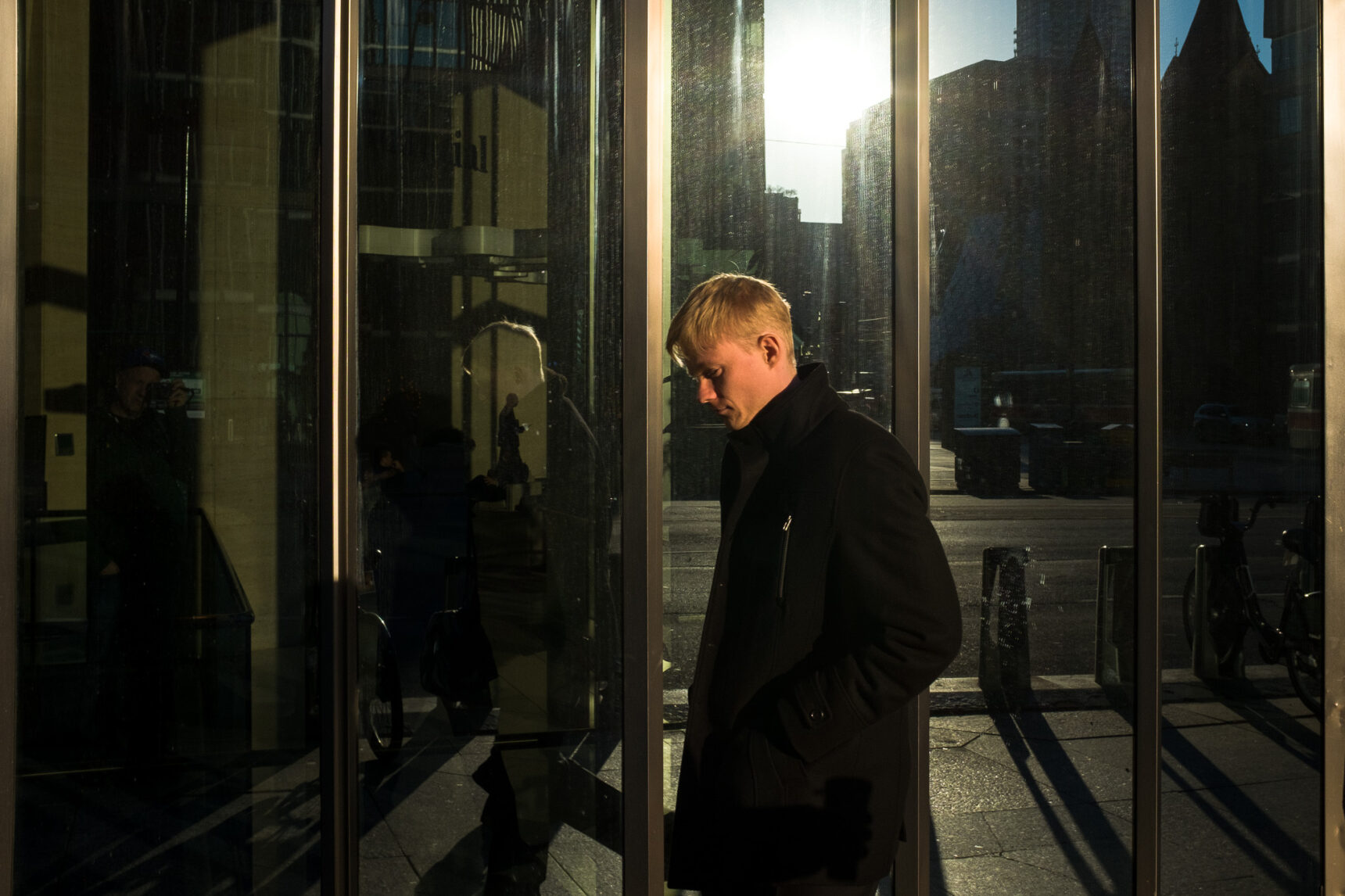
Optical viewfinders have been a favorite of street photographers for a few reasons. It lets you see a little bit outside the active frame so you can anticipate things that might come into your shot. This is huge on the street where so many things could happen at once. An OVF also prevents the blackout that happens at the moment of exposure with EVFS and SLR viewfinders. Seeing your subject at the exact moment of exposure gives your shooting a more fluid dynamic and helps identify that decisive moment that we’re all chasing. Finally, the OVF has an almost infinite depth of field so you can “look through” the scene to help with composition and identify layers in your image.
But optical viewfinders are mounted off axis from the lens which gives you a different line of sight to your subject. Most OVFs have parallax correction and move the frame inside the viewfinder as your focus point moves closer or farther from the camera. It’s a trade off that means accurate framing is often impossible so expect to crop a little to clean up the edges of your shots.
The Fuji X100T includes the company’s legendary hybrid viewfinder where an optical viewfinder and EVF are combined in one unit. While I prefer shooting with the OVF I found myself using the camera’s excellent EVF more and more as time went on. The EVF shows you the scene as the sensor sees it so there’s no need for parallax correction. It also shows your image’s depth of field and exposure in real time – you’re literally seeing the final shot as you take it. Being able to see the scene as a final photograph is actually pretty cool and there were a few times when seeing things this way changed my perspective on the shot.
For times when I need to be nimble with the camera then the OVF is the way to go but it sure is nice having the option.
APS-C And Shooting With A 23mm Lens
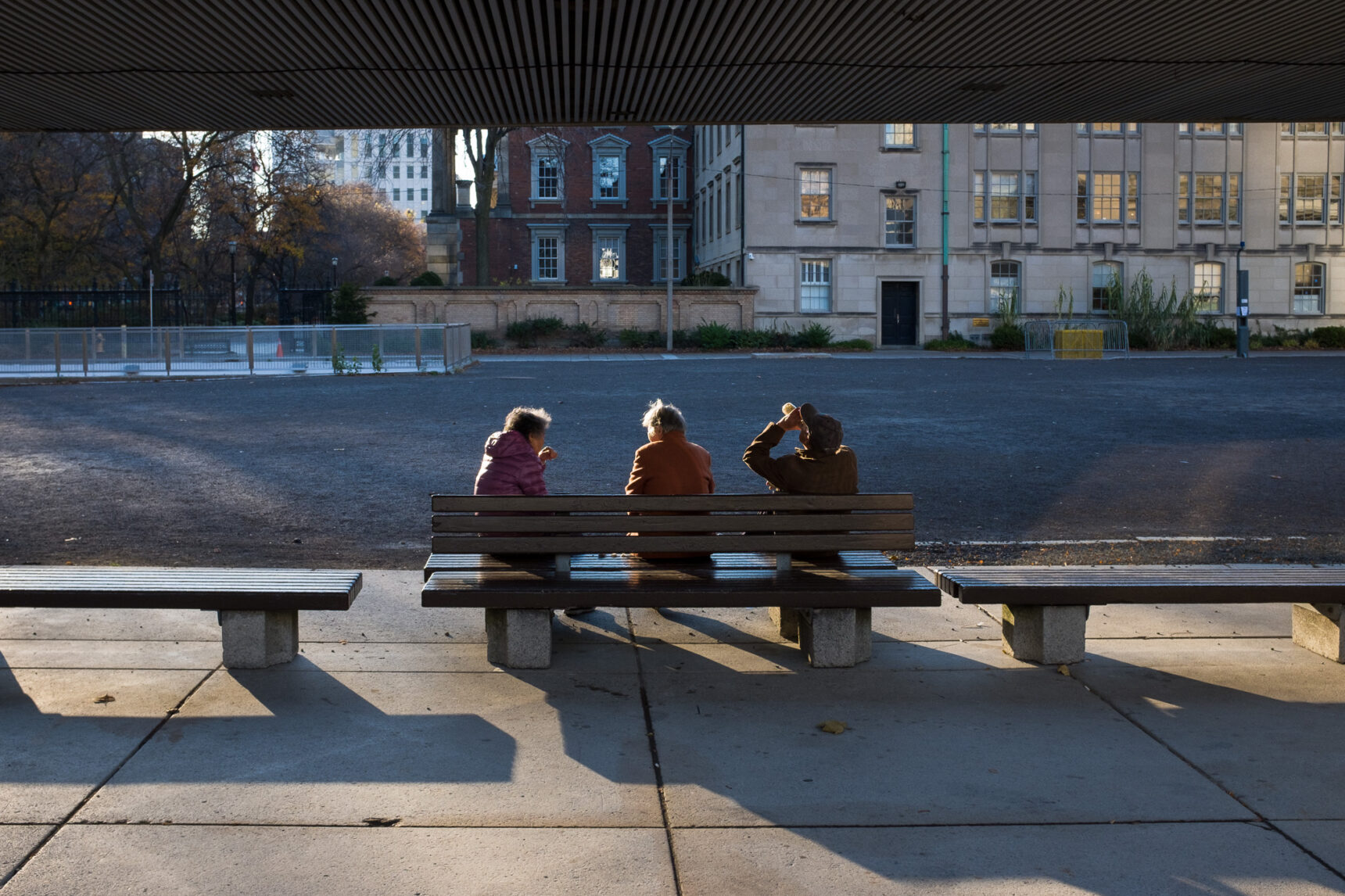
A lot of people think that full frame sensors are the only way to go for digital photography. But the time has long passed where there’s any type of appreciable difference in quality between full frame and APS-C sensors. The only practical difference is that APS-C requires a nominally wider lens to achieve the same field of view so instead of a 35mm lens the Fuji X100T uses a 23mm.
Wide angle lenses expand the space in a the scene so that objects in the background appear even farther away than they did in real life. This effect is more pronounced with a 23mm lens than with a 35mm lens but most people will never notice the subtle difference.
I actually like the enhanced depth perception wider angle lenses introduce. It creates an almost cinematic sense of place that my subject can exist withing. Seperating foreground, midground and background into clearly divided planes within the shot. Yet another tool that can be used to create compelling images.
X100T Is There For You
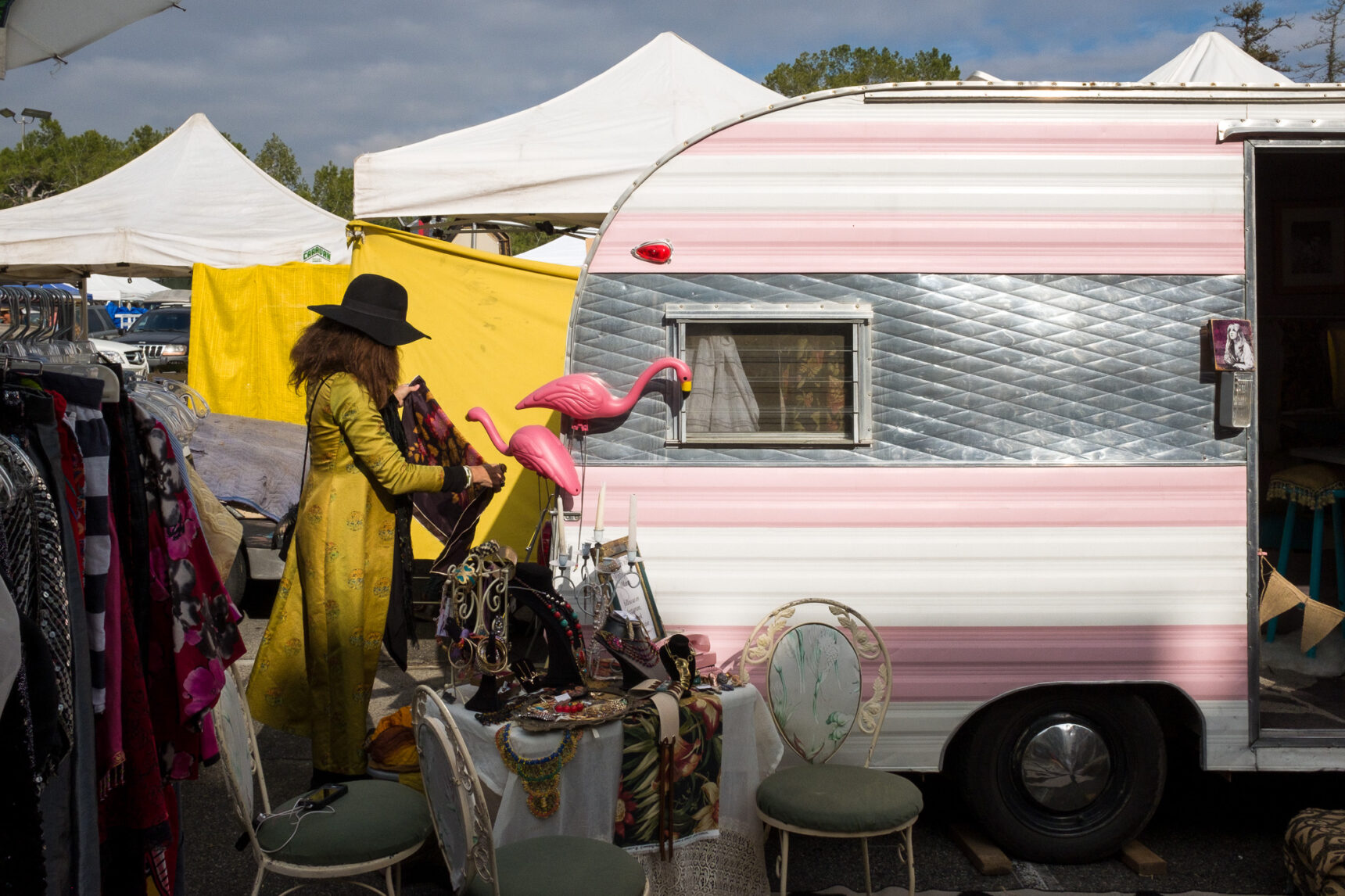
I found myself reaching for the Fuji X100T every time I walked out the door. In fact you rarely saw me without it strung around my neck because it’s so enjoyable to use. But I didn’t just bring it with me, I actually used it. A lot. It’s small, light and has enough character that I found myself having an emotional connection to it after only a few days.
And having the camera with me all the time brought about an interesting change in my work. The people and events I was seeing became more imporatant to me than structuring a photograph around them. Snapping a shot became a simple as lifting the camera to my eye and nothing stood in the way of my creative process.
Photography became conversational. Something I did as a matter of fact rather than trying to pry images out of the world in front of me. My images became more fluid and more natural as I stopped worrying about taking images and just reacted.
Sure, I could do exactly the same thing with any old camera but this camera in particular brought about this change for me. Scan the web and you’ll find thousands of people that have a similar story about their X100/s/t. The camera has an almost magical ability to inspire you to use it and that has to be worth something!
Fuji X100T Gets A Lot Of Things Right
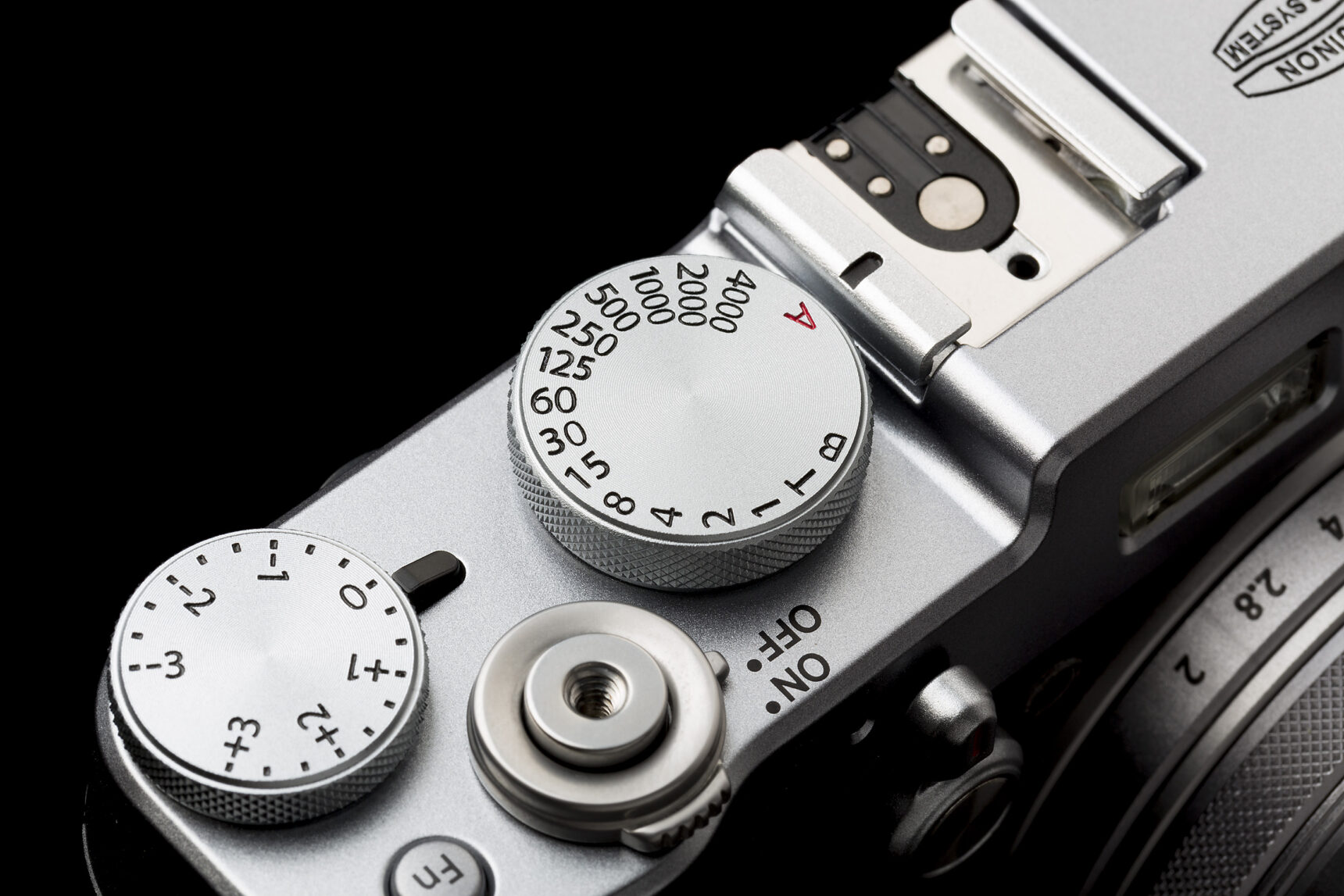
No camera is perfect but the Fuji X100T gets a lot of things right and it’s a top pick for many street photographers around the world. I’ve used the camera for a couple months straight and here’s how I’d sum it up:
X100T Pros:
- Great image quality with those Fuji colors that pop.
- Excellent dynamic range (especially in highlights).
- Small and light weight, easy to carry.
- Responsive controls.
- Hybrid viewfinder combines OVF and EVF in one compact package.
- Super quiet leaf shutter for stealthy street shooting.
- Excellent auto-focus rarely misses a shot.
- 23mm lens matched to the sensor for sharp images at any aperture.
- Camera has character and encourages you to use it.
X100T Cons:
- Start up and wake from sleep times could be faster.
- Command can accidentally change shutter speeds in manual exposure mode.
- Viewfinder could be a little bigger.
- Battery life could be better.
Honestly, I had to dig deep to come up with any cons on this little camera. Fuji have done a great job with the X100 series of cameras from day one and the X100T is another winner. The X100T is available online at your favorite retailer:
Fuji X100T at B&H (Black)
Fuji X100T at B&H (Silver)
Fuji X100T at Adorama (Black)
Fuji X100T at Adorama (Silver)
Fuji X100T on Amazon (Black)
Fuji X100T on Amazon (Silver)
If you prefer to shop local you can check Fuji’s website for a brick and mortar retailer near you:
Fujifilm – Where To Buy Digital Cameras.
StreetShootr’s Take
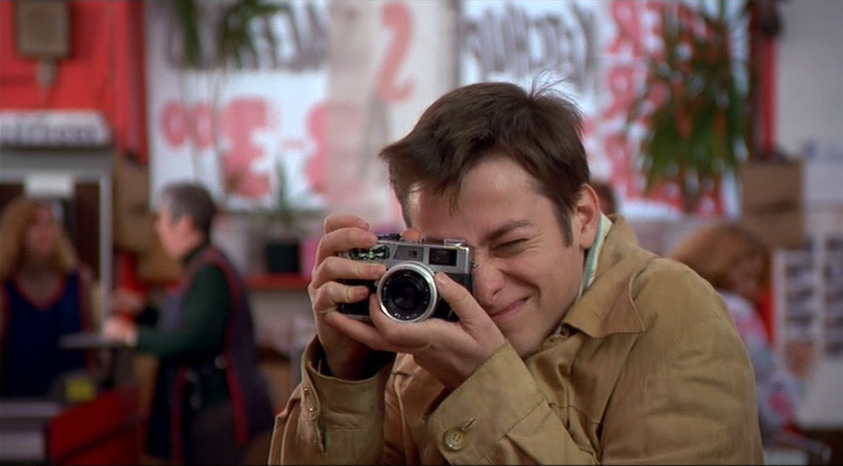
Am I the only person that thinks of Pecker whenever I see a Fuji X100T? Let me explain…
I’m talking about the movie Pecker by John Waters. In the movie, Pecker (played by Edward Furlong) takes photos of his loving but peculiar family and friends with his trusty Canonet 28 that’s always by his side. It’s an unassuming and effective tool that he uses with reckless abandon until he’s discovered by an NYC art dealer and his life falls to pieces.
Sure, the Fuji X100T sort of looks like the Canonet, but I even found myself using the camera in a Pecker sort of way. It was always by my side and ready to capture the next interesting thing that comes my way. Let’s face it, you can shoot street photography with any camera but the X100T is one of my favorites. And my other camera is a Leica M 240 so I’m not easily impressed.
The X100T is enjoyable to use and produces excellent quality images with a distinctive look. Everything just sort of works the way you’d expect and I can’t get over the emotional attachment I developed with camera. I actually felt bad if I left the house without it around my neck!
If I had to give a recommendation on this camera it would simply be:
Definitely, yes.
What’s your take on my Fuji X100T street photography review? Are you a fan of Fuji’s little wonder? Or are you holding out for a full frame version? Post your ideas in the comments below and keep the conversation going!

